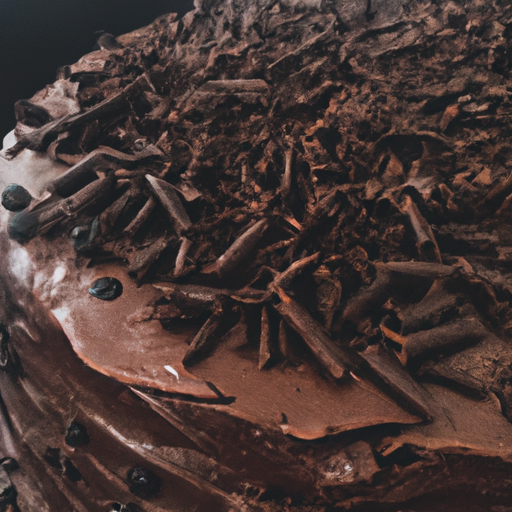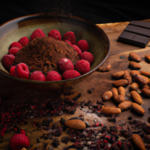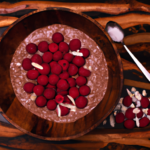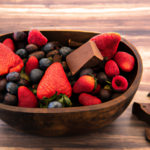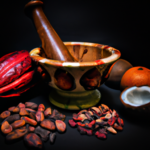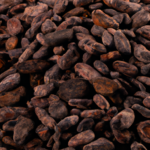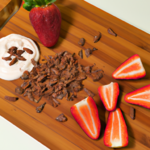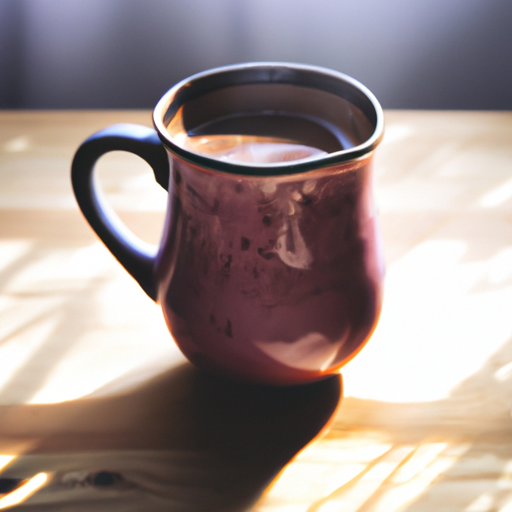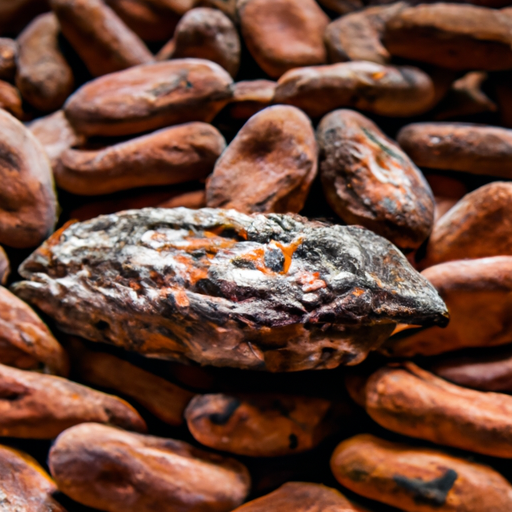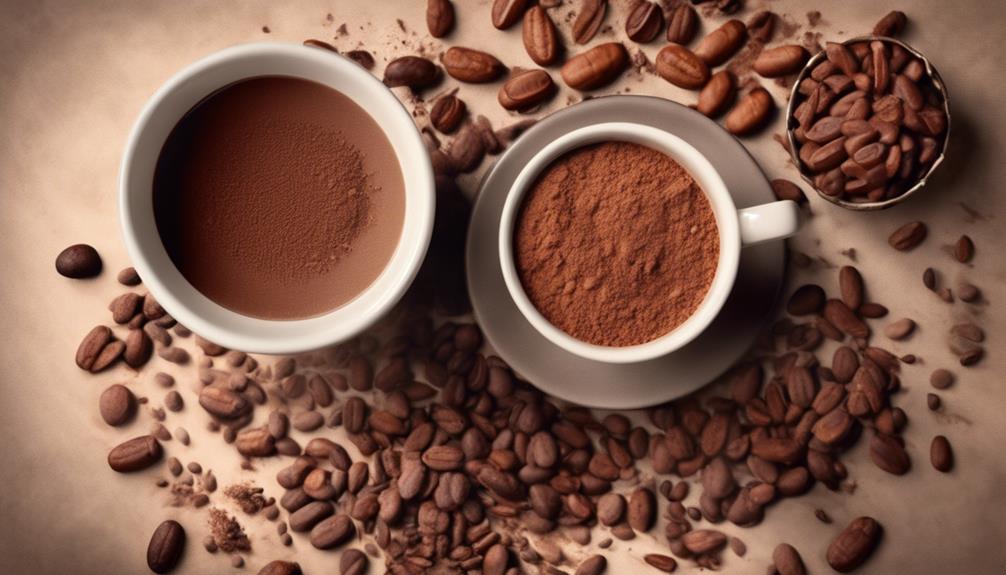Looking to elevate your homemade cakes with a special touch? Raw cacao nibs are the perfect ingredient! These small, tasty bites are rich in antioxidants and can bring a new level of flavor and sophistication to your sweet treats.
In this article, I will guide you through the process of incorporating raw cacao nibs into your cake batter, using them as a delectable topping, and even incorporating them into frostings and fillings.
We will also explore different flavor pairings and techniques for creating texture with raw cacao nibs. Additionally, I will provide tips for buying and storing these delightful ingredients, as well as share some mouthwatering recipes and inspiration to get you started.
Get ready to elevate your cake-making skills and impress your friends and family with the tantalizing addition of raw cacao nibs!
Key Takeaways
- Raw cacao nibs can be used in a variety of dishes, including cakes.
- One popular recipe is a raw cacao nib chocolate cake made with dates, almond flour, and coconut oil.
- The cake can be topped with a creamy avocado chocolate frosting made with raw cacao powder, maple syrup, and vanilla extract.
- Raw cacao nibs are packed with antioxidants, fiber, magnesium, and iron.
Understanding Raw Cacao Nibs
You’re going to love the rich and intense flavor of raw cacao nibs. They add a delightful crunch to your cake, giving it a decadent and indulgent twist.
Raw cacao nibs are small pieces of crushed cacao beans that have not been roasted. They are packed with health benefits. They are a great source of antioxidants, fiber, and minerals like magnesium and iron. These nibs also contain flavonoids, which can help improve heart health and reduce inflammation in the body.
If you prefer a slightly less bitter taste, you can roast the raw cacao nibs in the oven for a few minutes before using them in your cake. Roasting will enhance their natural sweetness and aroma.
Now, let’s move on to incorporating raw cacao nibs into the cake batter for a truly indulgent dessert.
Incorporating Raw Cacao Nibs into Cake Batter
To enhance the texture and flavor of your delectable creation, consider incorporating these crushed cacao beans into the batter. The addition of raw cacao nibs adds a delightful crunch and bursts of intense chocolate flavor to your cake.
When using cacao nibs in cookies, gently fold them into the dough right before baking. The heat will soften the nibs slightly, resulting in a heavenly contrast between the soft cookie and the crunchy cacao nibs.
Incorporating cacao nibs into brownie batter is a game-changer. Simply mix the crushed cacao beans into the batter before pouring it into the baking dish. As the brownies bake, the cacao nibs will melt slightly, creating pockets of rich chocolate goodness throughout.
Adding raw cacao nibs as a topping takes your cake to the next level of indulgence. The nibs provide a beautiful visual contrast and an extra burst of intense chocolate flavor.
Adding Raw Cacao Nibs as a Topping
For an extra touch of indulgence, sprinkle these crushed chocolate beans on top of your cake, adding a visually stunning contrast and a burst of intense chocolate flavor. Raw cacao nibs are not only delicious on their own, but they also make a delightful addition to baked goods. When used as a topping, they provide a satisfying crunch and a rich chocolate taste that pairs perfectly with the moistness of the cake. To showcase the beauty of the cacao nibs, you can create a decorative pattern or simply scatter them generously across the top. The possibilities are endless! In addition to cakes, you can also experiment with adding raw cacao nibs to cookies or using them in smoothies for a healthy and flavorful twist. Now, let’s move on to exploring how to incorporate raw cacao nibs in frosting and fillings.
Using Raw Cacao Nibs in Frosting and Fillings
Using raw cacao nibs in frosting and fillings can take your desserts to a whole new level. These little chocolate gems offer an irresistible crunch and intense chocolate flavor that will leave your taste buds wanting more. One way to incorporate raw cacao nibs is by adding them to ganache. By melting your favorite chocolate with some heavy cream and stirring in a handful of raw cacao nibs, you can create a ganache with a delightful texture and a burst of rich chocolate taste. After letting it cool and thicken, you can spread it on top of your cake for a decadent treat.
But the fun doesn’t stop there. You can also experiment with raw cacao nibs in cake fillings. Mixing them into creamy buttercream or whipped cream will give your filling a delightful crunch and a deep chocolate flavor. The combination of the smooth filling and the crunchy nibs creates a perfect balance of textures.
To take things even further, try pairing raw cacao nibs with other flavors. Whether it’s adding them to a fruity filling or combining them with a hint of mint, the addition of raw cacao nibs will create a harmonious blend of tastes and textures that will elevate your cake to the next level. So go ahead and get creative with raw cacao nibs in your frosting and fillings, and prepare to amaze your friends and family with your delicious creations.
Pairing Raw Cacao Nibs with Other Flavors
When pairing raw cacao nibs with other flavors, get ready to indulge in a symphony of tastes and textures. These five delectable ways will show you how to enjoy the combination of raw cacao nibs with other ingredients:
- Blend raw cacao nibs into your favorite smoothie for a rich and satisfying chocolate twist.
- Incorporate raw cacao nibs in cookies for a delightful crunch and intense chocolate flavor.
- Sprinkle raw cacao nibs over a bowl of creamy yogurt or ice cream for added texture and a burst of chocolate goodness.
- Mix raw cacao nibs into your morning oatmeal or granola for a healthy and indulgent breakfast treat.
- Combine raw cacao nibs with nuts or dried fruits for a delicious and energizing snack.
Now, let’s explore how to create texture with raw cacao nibs in the next section.
Creating Texture with Raw Cacao Nibs
To add a delightful crunch and depth of flavor to your desserts, try incorporating raw cacao nibs. These small pieces of crushed cacao beans provide a unique and satisfying texture to any baked goods. When mixed into a cake batter, these nibs create a delightful contrast to the softness of the cake, adding a pleasant crunch with every bite.
Not only do the nibs add texture, but they also release their rich, chocolatey flavor into the cake, enhancing its overall taste. As you take a bite, you’ll experience the smoothness of the cake combined with the satisfying crunch of the nibs, creating a truly decadent treat.
With their ability to create texture and enhance flavor, raw cacao nibs are a must-have ingredient for any cake lover.
Now, let’s explore different types of raw cacao nibs.
Exploring Different Types of Raw Cacao Nibs
After learning how to create texture with raw cacao nibs, I became intrigued by the idea of exploring different types of this delightful ingredient.
Not only can raw cacao nibs add a satisfying crunch to your cake, but they also come in various brands and flavors, each offering unique health benefits.
Experimenting with different brands allowed me to discover the subtle differences in taste and texture. Some nibs have a more intense chocolate flavor, while others have a hint of fruity or nutty undertones.
Additionally, I found that certain brands offer organic or fair-trade options, which align with my values.
By exploring the variety of raw cacao nibs available, you can create a cake that is not only delicious but also tailored to your preferences.
Now, let’s move on to some tips for buying and storing raw cacao nibs.
Tips for Buying and Storing Raw Cacao Nibs
Make sure you’re getting the best quality and flavor by following these tips for buying and storing your favorite raw cacao nibs.
When buying raw cacao nibs, look for organic and fair trade options to ensure ethical sourcing and minimal processing. It’s important to check the expiration date and choose a brand that offers a resealable package for optimal freshness.
When storing your raw cacao nibs, keep them in an airtight container in a cool, dark place, away from sunlight and moisture. This will help preserve their flavor and prevent them from becoming stale.
Now that you have your high-quality raw cacao nibs, let’s move on to the next section where we’ll explore recipes and inspiration for using them in delicious cakes and other desserts.
Recipes and Inspiration for Using Raw Cacao Nibs
Now that you know how to buy and store raw cacao nibs, let’s move on to the exciting part: using them in delicious recipes! Raw cacao nibs are incredibly versatile and can be incorporated into a wide variety of dishes, especially when it comes to making a cake.
One popular recipe is a rich and decadent raw cacao nib chocolate cake. Simply blend the raw cacao nibs with dates, almond flour, and a touch of coconut oil to create a moist and fudgy cake base. Top it off with a creamy avocado chocolate frosting made with raw cacao powder, maple syrup, and vanilla extract.
Not only does this cake taste amazing, but it also offers numerous health benefits. Raw cacao nibs are packed with antioxidants, fiber, and essential minerals like magnesium and iron. They can boost your mood, improve heart health, and even enhance brain function.
So, indulge in a slice of this raw cacao nib cake guilt-free and enjoy the incredible taste and health benefits it brings.
Frequently Asked Questions
Can raw cacao nibs be used as a substitute for cocoa powder in a cake recipe?
No, raw cacao nibs cannot be used as a substitute for cocoa powder in a cake recipe. While they both come from the same source, cacao nibs have a stronger and more bitter taste which may not work well in a cake.
Are there any health benefits to using raw cacao nibs in a cake?
There is potential for raw cacao nibs in a cake to have mood-enhancing effects and provide antioxidant properties that can benefit overall health.
Can raw cacao nibs be used in gluten-free or vegan cake recipes?
Sure, raw cacao nibs can be used in gluten-free cake options and vegan cake substitutions. They add a rich, chocolatey flavor and a crunchy texture. Simply incorporate them into your recipe for a delicious twist!
How do I prevent raw cacao nibs from becoming too crunchy in my cake batter?
To prevent raw cacao nibs from becoming too crunchy in my cake batter, I recommend soaking them in a liquid like almond milk or water before adding them. If you prefer, you can also try using alternative ingredients like chopped dark chocolate or cocoa powder instead.
Can raw cacao nibs be used as a substitute for chocolate chips in a cake recipe?
Yes, raw cacao nibs can be a delightful alternative to chocolate chips in cake recipes. They offer a unique flavor and texture, allowing you to experiment with different desserts and create a more complex taste experience.
Does the Smell of Raw Cacao Nibs Affect How They Are Used in Baking a Cake?
The raw cacao smell characteristics can greatly impact how they are used in baking a cake. The rich and intense aroma of raw cacao nibs can add depth and complexity to the flavor of the cake. It can also enhance the overall sensory experience, making the cake more enjoyable.
Conclusion
In conclusion, incorporating raw cacao nibs into cake recipes adds a delightful twist to the traditional dessert. The intense chocolate flavor and crunchy texture of the nibs create a truly indulgent experience.
Using raw cacao nibs in the batter can be done by simply adding them to the dry ingredients before mixing. This allows the nibs to distribute evenly throughout the cake, giving every bite a burst of chocolate goodness.
Another way to use raw cacao nibs is as a topping. Sprinkle them over the cake batter before baking, or even after the cake has cooled. This adds a beautiful and crunchy texture to the cake, making it even more enjoyable to eat.
Raw cacao nibs can also be incorporated into frosting and fillings. Simply mix them into your favorite frosting recipe or fold them into a creamy filling. This adds a unique and delicious twist to the cake, elevating it to a whole new level of decadence.
So go ahead and let your imagination run wild with these little bursts of chocolatey goodness. Let your cake be a canvas, with raw cacao nibs as your paintbrush, creating a masterpiece of flavor.

